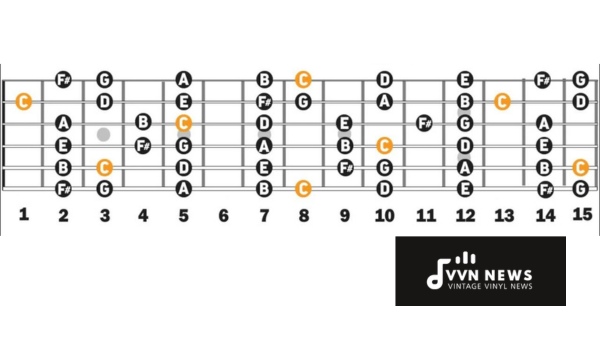The world of music is vast and intricate, each tune, rhythm, and melody a unique brushstroke on the expansive canvas of human emotional expression.
One such fascinating concept in this artistic realm is the Lydian mode – an often overlooked but powerful tool in a musician’s repertoire.
The Lydian mode, cloaked in all its mystery and ethereal charm, has been known to add a hypnotic allure to music.
If you’ve ever experienced that indescribable feeling when a particular piece of music sends chills down your spine or causes your heart rate to pick up its pace, you’ve likely born witness to the magic that this ancient scale concocts.
Let’s take a look at how it works its wonders and why it manages to cast such a spellbinding charm over us.
What Are Musical Modes and Their Significance?
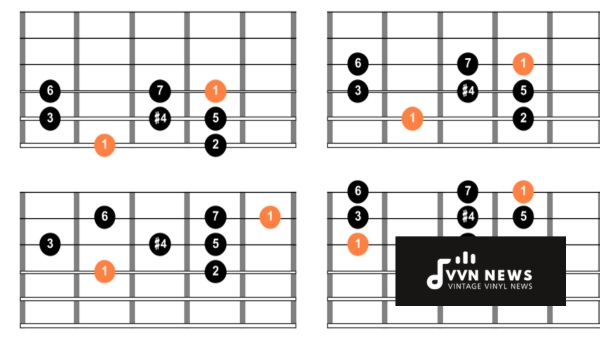
Musical modes, in a nutshell, are the variants of the diatonic scale – they constitute the very soul of numerous musical pieces.
Going back centuries to ancient Greek music theory, these modes have left their lasting imprint on a vast array of genres throughout history, from classical symphonies to modern jazz and pop.
Each mode offers an intricate palette of sounds that constructs a distinct ‘flavor’, setting different moods and feelings for listeners.
A melody in Dorian mode has a vastly distinct sonic character compared to one in Aeolian or Ionian modes.
Consequently, it becomes apparent that even though they may seem cryptic, comprehending these essential concepts can enhance your literacy as a musician.
The journey through its explorations will not just expand your creative universe but provide you with an invigorated appreciation and deep sensitivity towards the alluring realm of music!
What Characterizes the Lydian Mode?
The Lydian mode has some particular traits that distinctly set it apart from other musical modes. Here’s an in-depth exploration of its characteristics:
- Raised Fourth: The heart and soul of the Lydian mode is its raised fourth tone (also called the ‘augmented fourth’ or ‘tritone’). This gives the mode an openness and brightness that’s unique compared to others.
- Bright Sound: Owing to that augmented fourth, Lydian mode often has a brighter, more “happy” sound than the major scale. Its sound can almost be described as floating and dreamy.
- Root Note: The root note (or tonic) of the Lydian scale is where it starts and ends. If you were to play a C major scale but starting on F (making F your new tonic), that would be F Lydian.
- Avoiding Leading Tone: The standard major scale creates tension with its seventh degree – also referred to as leading tone– which naturally wants to resolve upward to the root for closure. In contrast, Lydian’s #4 (‘sharp four’) adds tension without suggesting resolution, creating an intriguing appeal.
- Interval Pattern: In terms of half steps (H) and whole steps (W), here’s how you would construct a basic Lydian Mode: W-W-W-H-W-W-H
- Chords Harmony: Chords harmonized with this mode include Major chords on I, II, viiº, and minor chords on III & VI.
Armed with these characteristics, your journey into exploring the enigmatic yet wonderful world of Lydian Mode can now begin.
Also Read: Aeolian Mode [The Secret To Creating Moody & Expressive Music]
What Differentiates the Lydian Mode from the Major Scale?
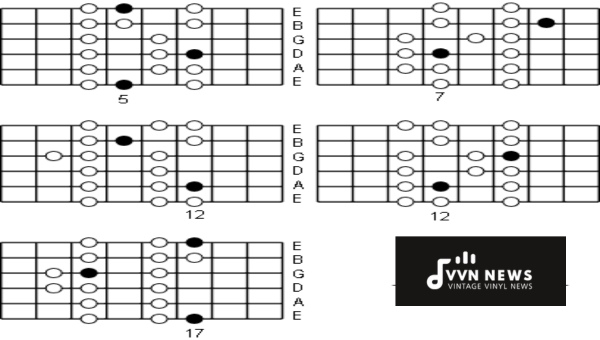
An initial glance may not reveal a prominent difference between the Lydian mode and the common major (or Ionian) scale.
Both emit an essentially uplifting or ‘happy’ vibe, but there’s an underlying nuance that sets them apart.
1. Musical Structure
Arguably the most significant divergence between these two scales lies in their respective formations—specifically, it’s about the 4th note of each scale.
The major scale boasts a perfect fourth, while the Lydian mode dances to a different beat with an augmented fourth, conveying a distinctively brighter and more ethereal atmosphere.
2. Emotional Undertones
The inclusion of that augmented fourth in the Lydian mode adds an exclusive touch of instability or tension to compositions.
In contrast, music built on major scales tends to emphasize resolution and stability with its perfect fourth.
3. Melodic Possibilities
As we dive deeper into these scales’ depths, we find unique melodic possibilities arising due to their structural divergences.
Musicians often leverage the augmented fourth in Lydian mode as a creative device to add elements of novelty and unexpectedness to their creations.
4. Harmonic Excursions
Harmonically speaking, both scales offer distinctive journeys for listeners.
The major scale finds its comfort zone in providing predictability, while pieces composed in the Lydian mode can often lead listeners into captivating realms of unpredicted harmonies thanks to its floating tonal center influenced by that noteworthy augmented 4th.
5. Chordal Properties
Even chord formation takes on exclusive characteristics within each of these scales due to their respective constructions – major uses standard triads (“Standard Triads”, n.d.), whereas chords rooted in Lydians tend to hold intriguing extensions and variations owing to its signature sharpened 4th note.
By appreciating these variations between the Lydian mode and major scale, you can approach your subsequent compositions with a greater level of artistry.
Cherish these crucial differences, for they are what lend timeless music its captivating allure.
What Are the Degrees of the Lydian Mode?
Let’s delve into the individual notes, often referred to as degrees, that make up the enchanting Lydian mode.
To do this effectively, it is essential to view each degree as a crucial stepping stone in our journey through this musical scale.
Just as each note in a piece makes an integral contribution to its harmony and rhythm, so does each degree of the Lydian mode.
- Root: This is the starting point and key reference for any particular scale. In the context of the Lydian mode, we usually talk about Lydian rooted on C or F – these would be your roots.
- Major Second: This is one whole step or two half steps above the root note.
- Major Third: This is two whole steps above the root note and gives you a major sound just like in your common major scales.
- Augmented Fourth: The pièce de résistance of our model scale; this note differs from the ‘perfect fourth’ we are used to hearing in major scales and adds a mystical sonic flavor that characterizes Lydian mode uniquely.
- Perfect Fifth: This note sits three whole steps plus one-half step above your root; familiar from countless melodies in popular music history.
- Major Sixth: Four whole steps from your root; should sound familiar from playing major scales too.
- Major Seventh: This is five whole steps plus one-half step above your root note, which takes you almost back to where you started but one-half step below at a higher frequency.
With these detailed aspects laid bare for you now, it isn’t hard to envision how you can leverage such knowledge to create some truly mesmerizing tunes.
Also Read: The Locrian Mode [Unlock The Secrets Of This Unique Scale]
How to Play the Lydian Mode on Various Instruments?
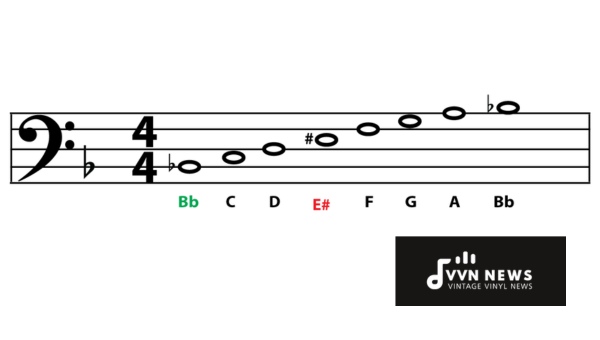
The Lydian mode isn’t just reserved for expert musicians. Whether you’re just starting to dive into music theory or happen to be a seasoned player, it’s easy enough to add this charming scale to your repertoire.
Let’s discuss how we can play the Lydian mode on various instruments.
Piano
Playing the Lydian mode on the piano is pretty straightforward. If we take C as our root note (as shown below), here are the steps:
- Start by locating C on your keyboard.
- Play all white keys up to the next C.
- To give it that mystical Lydian touch, change F (the fourth note) to F#.
By following these easy steps, you’ve successfully played a C Lydian scale!
Guitar
If you’d prefer tackling this mode on guitar, consider these instructions:
- Locate a C note on your fretboard; let’s pick the one at the 8th fret of the low E string as an example.
- Mastering scales in different positions takes time and practice. For starters, one of the simplest ways to play a Lydian Scale involves using a seven-note sequence: start at C and go up through D, E, F#, G, A, and B.
Practice is critical when exploring new scales or chords; don’t be discouraged if it doesn’t come naturally at first!
Violin
Applying the Lydian Mode onto other string instruments like the violin can be done as follows:
- If we want to play the C Lydian scale, begin with open G (since in standard tuning G is lower than middle C).
- Adhere to these open-string finger positions: G(open), A(3rd finger), B(3rd finger), C(4th Finger). You can repeat the process for each string.
Once learned, you can apply it across any root note, instantly infusing your music-making with an air of mystery.
Famous Pieces Harnessing the Lydian Mode
Though not as commonly used as other musical modes, the Lydian mode holds an enchanting charm that has been utilized to create some unforgettable pieces.
Here’s a look at just five of those remarkable melodies where you can hear this distinctive scale:
1. “Possibly Maybe” by Bjork
Bjork, known for her eclectic style, fully embraces the Lydian mode in her song “Possibly Maybe”.
The unmistakable raised fourth imparts a hauntingly beautiful touch that complements Bjork’s otherworldly vocals.
2. “Flying in a Blue Dream” by Joe Satriani
Joe Satriani is renowned for his innovative approach to electric guitar playing and his extensive use of unique scales.
His instrumental piece “Flying in a Blue Dream” beautifully demonstrates his mastery of the Lydian mode, conveying a soaring sensation through fluid guitar licks.
3. “Jane Says” by Jane’s Addiction
Perry Farrell and Dave Navarro employed the mesmerizing charm of the Lydian mode in their hit song ‘Jane Says.’
This popular track propels listeners into an elevated sensory realm through its brilliant fusion of punk, rock, and this ancient Greek scale.
4. “Freewill” by Rush
Canadian rock band Rush found their voice uniquely harmonizing with the Lydian mode on their track “Freewill.”
The distinctive fourth is evident throughout parts of this song, giving it an energetic bounce and catchy melody hard to shake off.
5. Simpson’s Main Theme
Created by famed composer Danny Elfman for one of television’s most treasured works – ‘The Simpsons,’ this main theme is another intriguing exploration of the magic woven through the intersections of culture and music via the Lydian mode.”
Each of these songs encapsulates the subtle yet distinct allure of the Lydian mode, a testament to its transformative capacity when embraced by skilled musicians.
Every composition showcases its capability to evoke emotions that swing between ethereal euphoria and profound melancholy, leaving listeners spellbound under the beautiful enigma that is the Lydian mode.
Also Read: Musical Modes Explained [What Are They & How Do I Use Them?]
What Chord Progressions Harmonize Well with the Lydian Mode?
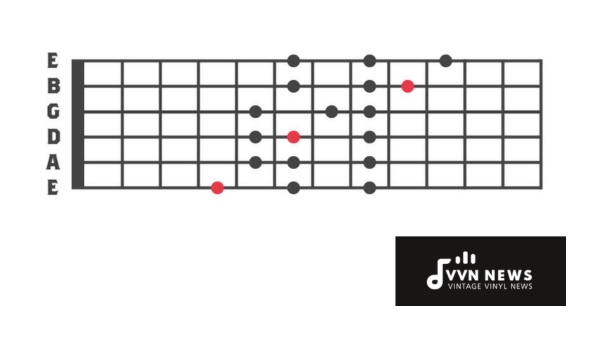
To master the use of the Lydian mode, it’s crucial to know which chord progressions harmonize well with it.
As the Lydian mode is a major scale, most chord progressions that work in a major key will also harmonize effectively with it.
There are certain chords specific to this mode that create its distinct sound.
I – II Chord Progression
The beauty of Lydian comes to life notably in the I-II progression. The shift from the major I chord (the tonic) to the major II chord gives that airy, magical sound that has a definitive sensual appeal.
Example: If we’re in C Lydian, this would be a movement from C Maj to D Maj.
IV – II Chord Progression
The next progression involves utilizing the raised 4th note of your Lydian scale.
The use of this #4 or b5 note creates a unique tension and release—a sonic trait associated with the mysterious charm of this mode.
One important point worth mentioning is that employing these chords within your music does not automatically imply you’re operating in Lydian mode—it’s all contextual.
Also Read: Phrygian Mode [Adding Exotic Flair To Your Musical Compositions]
FAQs About The Lydian Mode
What is the Lydian mode?
The Lydian mode is a type of diatonic scale in music, characterized by a sharp fourth note, giving it a unique sound compared to the standard major scale.
Where did the Lydian Mode originate from?
Lydian mode finds its roots in Ancient Greece where it was one of several traditional modes and later found favor among many Western music composers.
How can I identify a piece of music composed in the Lydian Mode?
If you notice that the fourth note of a major scale is raised (sharp), you’re potentially listening to a composition in the Lydian mode.
Is there a link between the Lydian Mode and Jazz music?
Yes. The sharp fourth note in Lydian mode lends itself well to jazz improvisations, thus being frequently used within jazz compositions.
Why should I learn about the Lydian Mode if I’m just starting to learn an instrument?
Lydian mode offers an enriching harmonic palette and can improve your understanding of scales, contributing significantly to your overall musicianship.
Conclusion
In sum, learning the Lydian mode can bring a fresh perspective to your musical journey.
Whether you’re a budding musician or deep into your music journey, this mode, with its unique feel and ethereal charm, can add an exciting layer of complexity to your compositions.
Remember that the power of Lydian lies in its sharp 4th. Don’t be afraid to experiment with it and find out how it can transform your music.
Keep practicing scales, follow chord progressions, and immerse yourself in popular pieces that exhibit Lydian’s charm – happy experimenting!
